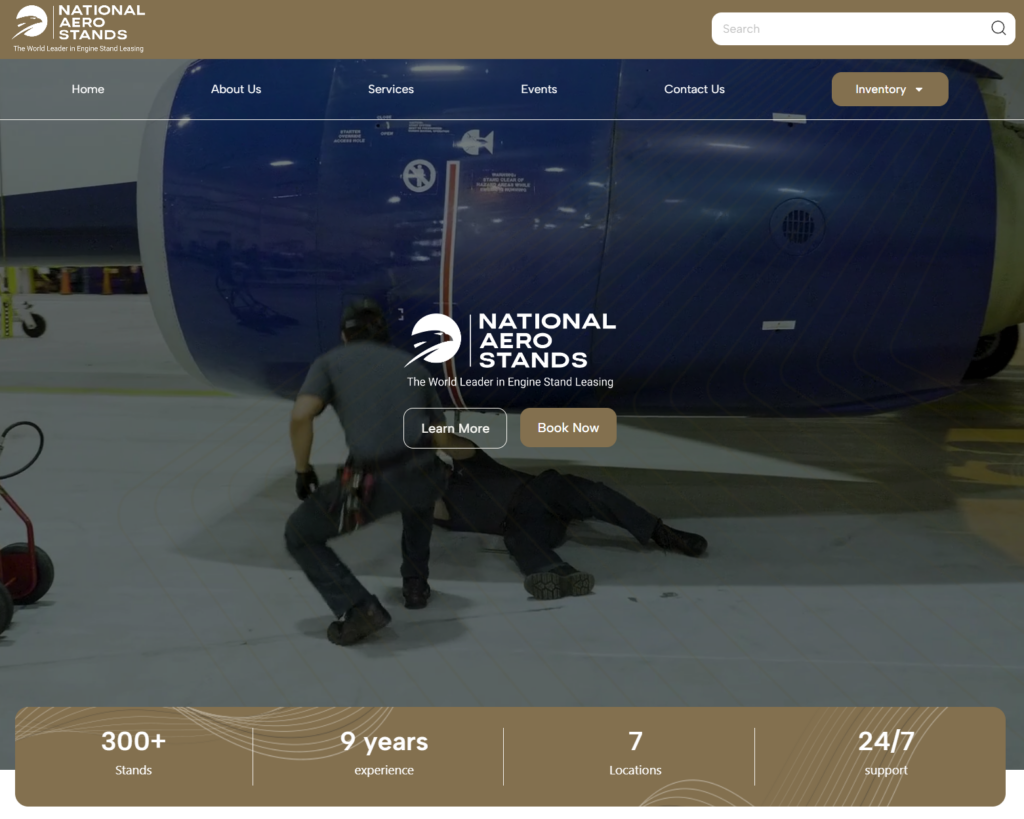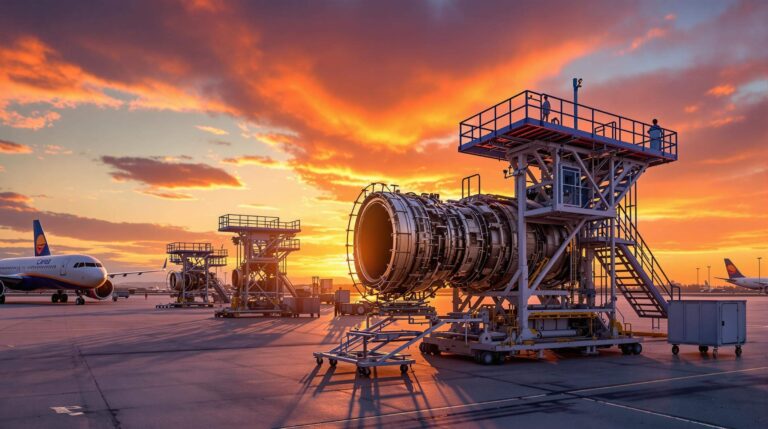Aviation maintenance demands precision, efficiency, and smart financial decisions. For airlines and MRO (Maintenance, Repair, and Overhaul) providers, jet engine stands are indispensable tools for safely transporting and installing aircraft engines. However, purchasing these specialized stands outright can strain budgets. Leasing offers a flexible, cost-effective alternative—but how does it work, and why is it advantageous? This article explores the financial benefits of leasing, popular stand models like the CFM56-7B Engine Stand, and how to select the right solution for your operations.
Why Leasing Jet Engine Stands Makes Financial Sense
Owning jet engine stands requires significant upfront investment, ongoing maintenance costs, and long-term storage commitments. Leasing eliminates these burdens while providing access to cutting-edge equipment. Here’s why leasing is a smarter choice for many aviation businesses:
Lower Upfront Costs
Purchasing a jet engine stand can cost hundreds of thousands of dollars. Leasing spreads these expenses into manageable monthly payments, freeing capital for other priorities like workforce training or facility upgrades.
Flexibility for Fleet Changes
Airlines frequently update their fleets, retiring older engines like the CFM56-7B in favor of newer models. Leasing allows you to exchange stands as your engine portfolio evolves, avoiding the risk of owning obsolete equipment.
Maintenance and Storage Included
Reputable providers handle servicing, repairs, and storage. This reduces downtime and ensures compliance with safety standards.
Lease vs. Purchase: A Quick Comparison
| Factor | Leasing | Purchasing |
|---|---|---|
| Initial Cost | Low upfront investment | High capital expenditure |
| Flexibility | Easily upgrade or swap models | Limited to owned equipment |
| Maintenance Responsibility | Included in lease agreements | Owner’s responsibility |
Types of Jet Engine Stands Available for Lease
Jet engine stands are tailored to specific engine models, ensuring secure handling and alignment during maintenance. Below are common types and their applications:
CFM56 Series Stands
The CFM56-7B engine, used in Boeing 737 Next-Generation aircraft, requires specialized stands for safe removal and installation. The CFM56-7B Engine Stand features adjustable arms, hydraulic controls, and compatibility with related engine variants.
Widebody Engine Stands
Larger engines, such as the GE90 or Trent XWB, demand heavy-duty stands with higher weight capacities and extended reach. These are ideal for long-haul aircraft maintenance.
Universal Adjustable Stands
For facilities servicing multiple engine types, modular stands offer customizable configurations. They’re cost-effective for smaller operators with diverse needs.
Popular Leased Models and Their Applications
| Stand Model | Compatible Engines | Typical Use Cases |
|---|---|---|
| CFM56-7B Stand | CFM56-7B, LEAP-1B | Narrow-body aircraft maintenance |
| Trent 700 Stand | Rolls-Royce Trent 700 | Airbus A330 engine services |
How to Choose the Right Jet Engine Stand for Your Needs
Selecting the ideal stand requires evaluating your operational requirements and budget. Consider these factors:
1. Engine Compatibility
Ensure the stand matches your engine’s specifications. For example, the CFM56-7B Engine Stand is optimized for 737 engines but may adapt to similar models with adjustments.
2. Maintenance Frequency
High-volume facilities benefit from dedicated stands, while smaller operations might prefer universal models.
3. Lease Terms and Support
Partner with providers offering comprehensive support, including:
- On-site training for technicians
- Emergency repair services
- Flexible lease durations
Frequently Asked Questions About Leasing Jet Engine Stands
Q: How long are typical lease agreements?
A: Most agreements range from 12 months to 5 years, with options to renew or upgrade.
Q: Can leased stands be customized?
A: Yes. Providers often modify stands to fit unique engine configurations or facility layouts.
Q: Is leasing better for short-term projects?
A: Absolutely. Leasing avoids long-term commitments, making it ideal for ad-hoc projects or seasonal demand spikes.
Final Considerations
Leasing jet engine stands optimizes cash flow, ensures access to modern equipment, and simplifies maintenance logistics. Whether you’re servicing CFM56-7B engines or next-generation turbofans, the right lease agreement aligns with your operational and financial goals.

Ready to explore leasing options? Visit stands.aero to discover tailored solutions for your aviation maintenance needs. Their expertise ensures a seamless, cost-effective experience.






